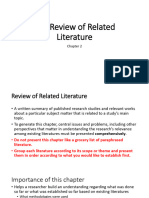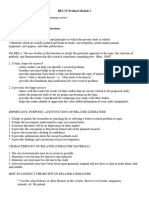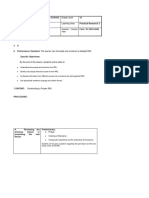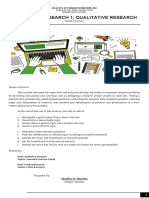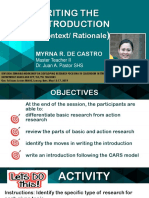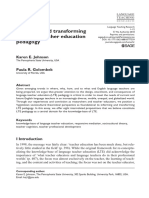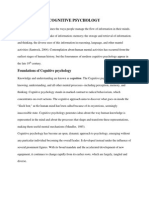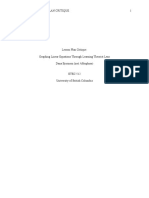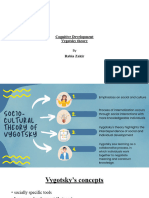0% found this document useful (0 votes)
25 views8 pagesRRL Guideline
The document outlines the structure and purpose of a literature review, emphasizing its role in summarizing previous research, identifying gaps, and justifying new studies. It details the components of a Review of Related Literature (RRL), including the introduction, foreign and local studies, research gaps, and conclusion. The document also provides a step-by-step guide on how to form an RRL, highlighting the importance of synthesizing information and addressing specific research needs.
Uploaded by
cutieeenaomiCopyright
© © All Rights Reserved
We take content rights seriously. If you suspect this is your content, claim it here.
Available Formats
Download as DOCX, PDF, TXT or read online on Scribd
0% found this document useful (0 votes)
25 views8 pagesRRL Guideline
The document outlines the structure and purpose of a literature review, emphasizing its role in summarizing previous research, identifying gaps, and justifying new studies. It details the components of a Review of Related Literature (RRL), including the introduction, foreign and local studies, research gaps, and conclusion. The document also provides a step-by-step guide on how to form an RRL, highlighting the importance of synthesizing information and addressing specific research needs.
Uploaded by
cutieeenaomiCopyright
© © All Rights Reserved
We take content rights seriously. If you suspect this is your content, claim it here.
Available Formats
Download as DOCX, PDF, TXT or read online on Scribd
/ 8



















